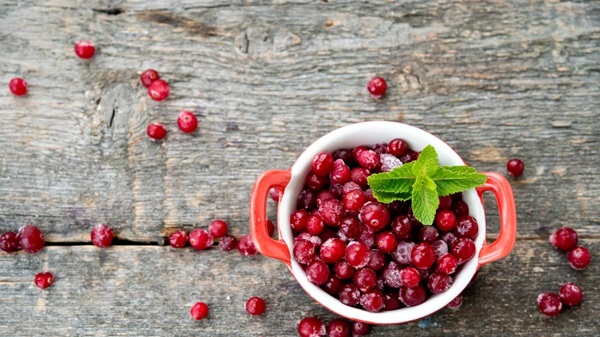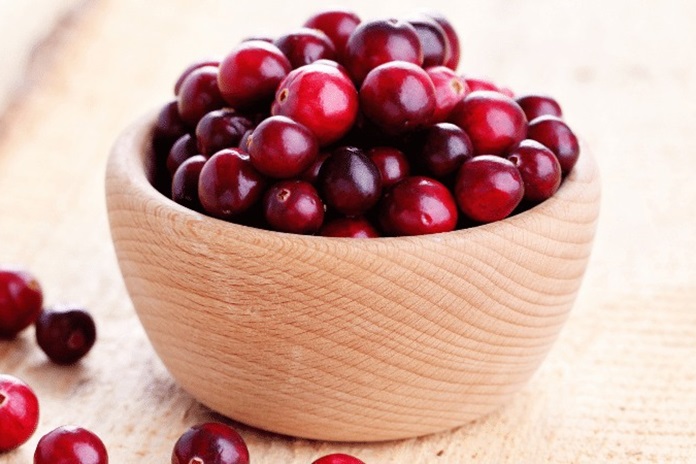National Eat Cranberry Day is observed on November 23 each year. Cranberries are a tasty fruit used to make even tastier dishes and drinks, with plenty of health benefits. According to legend, cranberries were served at the first Thanksgiving in Plymouth, Massachusetts, in 1621. Eat A Cranberry Day is all about enjoying and celebrating everything that cranberries offer, especially by eating them.
History of Eat A Cranberry Day
Cranberries have existed for tens of thousands of years, with their origins tied to natural and geological events. After the Ice Age, retreating glaciers left behind depressions that later became cranberry bogs. These geological changes created ideal conditions for cranberries to thrive.
Native Americans, who called cranberries “sassamanash,” used them in various ways. They ate them, made dyes from them, and used them to heal war wounds. Recognizing their health benefits, they even created a cranberry-based energy bar called “pemmican.”
When Europeans arrived in the 16th and 17th centuries, they were already familiar with cranberries, as they had their own bogs in southern England. The fruit was known by different names, but “craneberry” was the most common, as its flower resembled a crane.
Large-scale cranberry farming started in 1816 when Captain Henry Hall discovered that adding sand to his cranberry bogs improved their growth. He developed a method to
spread sand over the vines, revolutionizing cranberry cultivation. This technique quickly caught on, leading to a significant rise in cranberry farming.
As the industry expanded, new tools and methods were introduced to make cultivation and harvesting more efficient, creating thousands of jobs. Over time, cranberries became a vital part of the economy, with global demand steadily increasing.
The first major pesticide contamination case in the U.S. involved cranberries, known as the “Great Cranberry Scare of 1959.” In the mid-1950s, cranberry farmers began using a chemical called ‘aminotriazole,’ a known carcinogen, to control weeds in their bogs.
The FDA approved its use, but only if applied after the harvest to avoid contaminating the berries. In 1958, the Delaney Clause banned the sale of foods containing cancer-causing substances, leading to tests that found aminotriazole contamination in some cranberries from Washington and Oregon.

Just before Thanksgiving, the Secretary of the Department of Health, Education, and Welfare, Arthur Fleming, issued a public warning against eating cranberries. The incident prompted governments worldwide to prioritize food safety by regularly recalling contaminated foods.
Today, U.S. farmers harvest around 40000 acres of cranberries annually, with the industry continuing to advance. Every year on November 23, Eat A Cranberry Day is celebrated across the country to honor these remarkable berries.
While there is no official record of the holiday’s origin and no congressional or presidential declarations making it a national day, the earliest mention of Eat A Cranberry Day online dates back to 2015.
| 1647 (The Cranberry) | Missionary John Elliot names the fruit ‘cranberry,’ derived from the German ‘kraanbere’ and English ‘craneberry.’ |
| 1683 (Get Juicy With It) | American settlers make the first-ever cranberry juice. |
| 1816 (First Cranberry Cultivation) | Veteran Henry Hall mass cultivates cranberries for the first time in Dennis, Massachusetts. |
| 1912 (Things Get Saucy) | The first-ever cranberry sauce is marketed. |
| 1959 (The Great Cranberry Scare) | Thanks to this significant health scare, Americans have a cranberry-less Thanksgiving for the first time in a long while. |
| 2015 (The Internet Debut) | Eat A Cranberry Day was first mentioned and celebrated on the World Wide Web. |
Five Interesting Facts About Cranberries
- Native to North America: Cranberries are one of the few fruits native to North America. Indigenous peoples used them for food, medicine, and as a natural dye long before European settlers arrived.
- They Float: Cranberries have small air pockets inside, which makes them float in water. This is why they’re often harvested using the “wet” method, where fields are flooded, and the berries are skimmed off the surface.
- Cranberry Bogs are Perennial: Cranberry plants are hardy perennials that can live for over 100 years! Some cranberry bogs in Massachusetts are still producing fruit after more than a century of use.
- Superfood Status: Cranberries are rich in antioxidants and vitamin C. They’re well-known for their ability to help prevent urinary tract infections, thanks to compounds that prevent bacteria from sticking to the bladder walls.
- Unique Growing Conditions: Cranberries grow best in acidic soil and require a special combination of sandy soil, abundant fresh water, and a long growing season that includes cold winters for dormancy. This makes their cultivation highly specialized and region-specific, mainly in the northern United States and Canada.
Conclusion
National Eat A Cranberry Day is a celebration of a fruit deeply rooted in North American history and culture. From its early use by Native Americans to its importance in modern agriculture, cranberries have played a significant role in both the culinary and economic landscapes. This day serves as a reminder to appreciate not only the delicious dishes and health benefits that cranberries offer but also their historical significance and the unique conditions that allow them to thrive. Whether enjoyed in sauce, juice or as a snack, cranberries are a small but mighty fruit worthy of this annual tribute.
Frequently Ask Question
1. What is National Eat A Cranberry Day?
National Eat A Cranberry Day is observed annually on November 23 to celebrate and enjoy cranberries, a fruit known for its health benefits and versatility in various dishes and drinks.
2. Why is National Eat A Cranberry Day celebrated on November 23?
The date aligns with the harvest season of cranberries in the United States and the traditional use of cranberries in Thanksgiving meals, making November 23 a fitting day to honor the fruit.
3. What is the historical significance of cranberries?
Cranberries have been used for thousands of years, with Native Americans utilizing them for food, medicine, and dyes. They were also likely present at the first Thanksgiving in Plymouth, Massachusetts, in 1621.
4. How did cranberries become a cultivated crop?
Large-scale cranberry farming began in 1816 when Captain Henry Hall discovered that adding sand to cranberry bogs improved their growth. This led to the development of modern cranberry farming techniques.
5. What was the “Great Cranberry Scare of 1959”?
The “Great Cranberry Scare” refers to a significant health scare in 1959 when cranberries were found to be contaminated with a carcinogenic chemical called aminotriazole. This led to widespread fear and a temporary drop in cranberry consumption.
6. Are cranberries native to North America?
Yes, cranberries are one of the few fruits native to North America. Indigenous peoples used them for various purposes long before European settlers arrived.
You may also like to read, National Mason Jar Day – November 30, 2024
